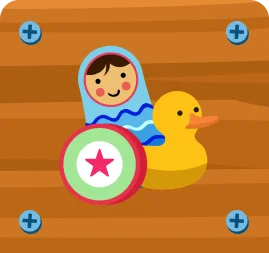“Can screen time be beneficial for kids with Autism? Yes, it can be!”
This might not sound true when you first hear it, but you must believe it.
Making an autistic child learn effectively and smartly can be challenging for many people out there, but actually, you just have to find the right activities and active games for him to learn effectively and in a fun environment; from the comfort of your home.
Online games are more than just fun these days, they are a great source of learning for children with special needs. Let’s explore how active games for children with autism can help them become smart and a great learner.
Before we talk about active games for children with Autism, let’s a brief look at ASD (Autism Spectrum Disorder), what are its symptoms and how can we keep children with Autism active through games.
Introduction:
What is ASD (Autism Spectrum Disorder)?
Autism Spectrum Disorder (ASD) is a developmental condition that affects a child’s learning, communication, experiences with surroundings, and interactive skills. Individuals with Autism might face difficulty in communication and social interactions, but every child’s condition varies on the severity of the disorder. Each child has a unique spectrum of symptoms. But some of the common symptoms include:
Key Symptoms of Autism:
- Faces communication difficulties
- Struggles with social interaction
- Engage in repetitive behaviors
- Highly sensitive to sensory stimuli
- Delays in improved motor skills
Why is it Important to Keep Children with Autism Active?
Keeping autistic children active is important as it helps improve their physical health and social skills, and helps them to channel their energy. Keeping them busy in games for children with autism can be an effective way to encourage movement, also helping them develop important life skills in a fun environment.
Here are the benefits of why you should keep children with Autism active:
- Improves Physical Well-Being: Engaging children with Autism in active games helps improve strength, coordination, and overall physical well-being.
- Reduces Stress: Games allow children to bring their inner emotions out, helping them to manage their emotions and reducing stress or anxiety.
- Enhances Social Interactive Skills: Active games allow children to cooperate and communicate with other children, enhancing social and communication skills.
- Increases Attention Span: When children with Autism engage in play for a good deal of time, it increases their attention span and boosts focus and concentration.
- Promotes Positive Behaviors: Active games and structured activities like building blocks, solving puzzles, and arts and crafts reduce stress, and promote positive behaviors.
These are the benefits of why games for children with Autism are crucial, and how help with the development of several skills in autistic children
How WonderGames Help Children With Autism Stay Physically Active:
Want to keep your Autistic child physically active? Here’s the solution: WonderGames.
WonderGames, clinically proven games for children with special needs, offers a diverse range of active games for children with Autism. The games are designed specifically to keep the children with Autism physically and mentally fit. Our interactive games for children with Autism promise the development of many skills, focusing on motor, cognitive, and social skills in a fun environment. With several free online games for autistic children available on our website, we provide a great source of learning and entertainment for kids. For parents, who are looking for productive indoor activities for an autistic child, WonderGames is the best option as they ensure physical fitness, helping them live and grow healthy and smarter.
Here are the skills that our interactive games help develop in children with Autism:
- Motor skills
- Cognitive skills
- Focus and attention
- Hand-eye coordination
- Reflexes
- Decision making
- Response time
4 WonderGames to Keep Children with Autism Active at Home:
Here are 4 WonderGames to keep children with autism active at home:
1. SCOOP’D:

Welcome to Scoop’d, the addictive game that puts a virtual bucket right between your hands and transports you into your very own ice cream shop. Move your hands left and right to catch the sweet scoops as they fall from the top of the screen. But watch out for those red enemy balls – they’re troublemakers who will stop at nothing to ruin your frozen treats! Ready to put on your apron and become a master ice cream scooper? Let’s get scooping!
2. BUBBLE POP:
Get ready to pop as many soap bubbles as you can before the clock runs out. But watch out for those sneaky fireballs and bombs in red, they’ll pop your bubble in no time! With a bathtime theme, this game is the perfect way to add some fun to your daily routine. So, grab your bubble wand, and let’s get popping!
3. BALANCE IT:
Put your balance and coordination skills to the test like never before. Hold your hands out in front of you and form a plank to balance the objects that come your way. Do you think you’ve got what it takes to stay steady throughout the game? Let’s find out!
4. ASRO BLOCKS:
Get ready to be the commander of your own space mission! It’s up to you to destroy those blocks and complete your mission. But there’s a catch – you’ll need to use your body movements to control the paddle bounce the ball and destroy the blocks. Warning! – don’t let the ball touch the ground. Are you ready to land in the galaxy of fun? 3.. 2..1 Blast!
FAQs:
How do you entertain an autistic child?
To entertain an autistic child, engage them with sensory-friendly activities, interactive puzzles or blocks, or online games for children with special needs that match their interests and provide structured play.
What are the best activities for children with high-functioning autism?
The best activities for children with high-functioning autism include board games, arts and crafts projects, and interactive games for children with autism that enhance social interaction and motor skills.
How to make an autistic child active?
To make an autistic child active, engage him in structured activities like board games and art, and through physical play like swimming, and dancing.
What do kids with autism like to play with?
Many autistic kids like to play with sensory toys, building blocks, or interactive online games that offer repetitive play.
How to keep an autistic child busy?
To keep autistic children busy, engage them in productive activities and play like building blocks, solving puzzles, doing arts and crafts, or engaging them in interactive online games that enhance their skills.
How do I stop my autistic child from hyper?
To stop your autistic child from hyper, calm him with sensory breaks, relaxation exercises, or gentle pressure activities. Also, engage him in active games for children with autism to help him manage his energy.
How do you calm an energetic autistic child?
To calm an energetic autistic child, use different calming techniques like deep breaths, weighted blankets, or giving him quiet time to address his emotions and control them. Also, take help from interactive games for children with autism that offer relaxed and focused play.
Can an autistic child be very active?
Yes, autistic children can be very active. Make sure to keep them engaged in active games that enhance their motor skills and social interaction, and help them channel their energy.
How to get an autistic child to stop jumping?
To make an autistic child stop jumping, engage him in active jumping games like trampoline exercises, and guide him to jump in a controlled way, to let them jump safely.









